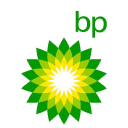Similar companies
Income Statement (USD)
| Q1 '25 | QoQ | |
|---|---|---|
| Revenue | 46.9B | 2.5% |
| Gross Profit | 8.44B | 45.8% |
| Cost of Revenue | 38.5B | 3.8% |
| Operating expense | 43B | 905.6% |
| Net Income | 687M | 135.1% |
Balance Sheet (USD)
| Q1 '25 | QoQ | |
|---|---|---|
| Total Assets | 281B | 0.3% |
| Total Liabilities | 203B | 0.2% |
| Total Equity | 58.2B | 1.7% |
| Shares Outstanding | 15.8B | 496.1% |
Cash Flow (USD)
| Q1 '25 | QoQ | |
|---|---|---|
| Cash from operations | 2.83B | 61.8% |
EPS
Financial Highlights for BP in Q1 '25
BP reported a revenue of 46.9B, which is a 2.5% change from the previous quarter. An increase in revenue typically indicates growing demand for the company's products or services. This positive change in revenue is a good sign, suggesting that the company's sales are moving in the right direction.
Gross Profit stood at 8.44B, marking a 45.8% change since the last quarter. Gross profit showcases the efficiency in production and sales processes.
Cost of Revenue was 38.5B, a -3.8% difference from the previous quarter. A rising cost of revenue may suggest increased production or sales costs, which can impact margins. However, if accompanied by a proportionate rise in revenue, it could indicate scaling operations.
Operating Expenses for this period were 43B, showing a 905.6% change from the last quarter. Operating expenses cover the costs of running daily business operations. A significant increase might indicate inefficiencies or investments in growth, while a decrease could suggest cost-saving measures or potential underinvestment in key areas.
Net Income for the quarter was 687M, showing a 135.1% change from the prior quarter. Net income provides a clear picture of the company's profitability after all expenses. An increase suggests the company is becoming more profitable, while a decrease may raise concerns about the company's financial health, unless there are specific one-time costs or investments.
It was a positive quarter for BP with growth in revenue, gross profit, and net income. Higher operating expenses might indicate increased investments or potential inefficiencies. A decline in EBITDA signals potential operational challenges or increased costs.






